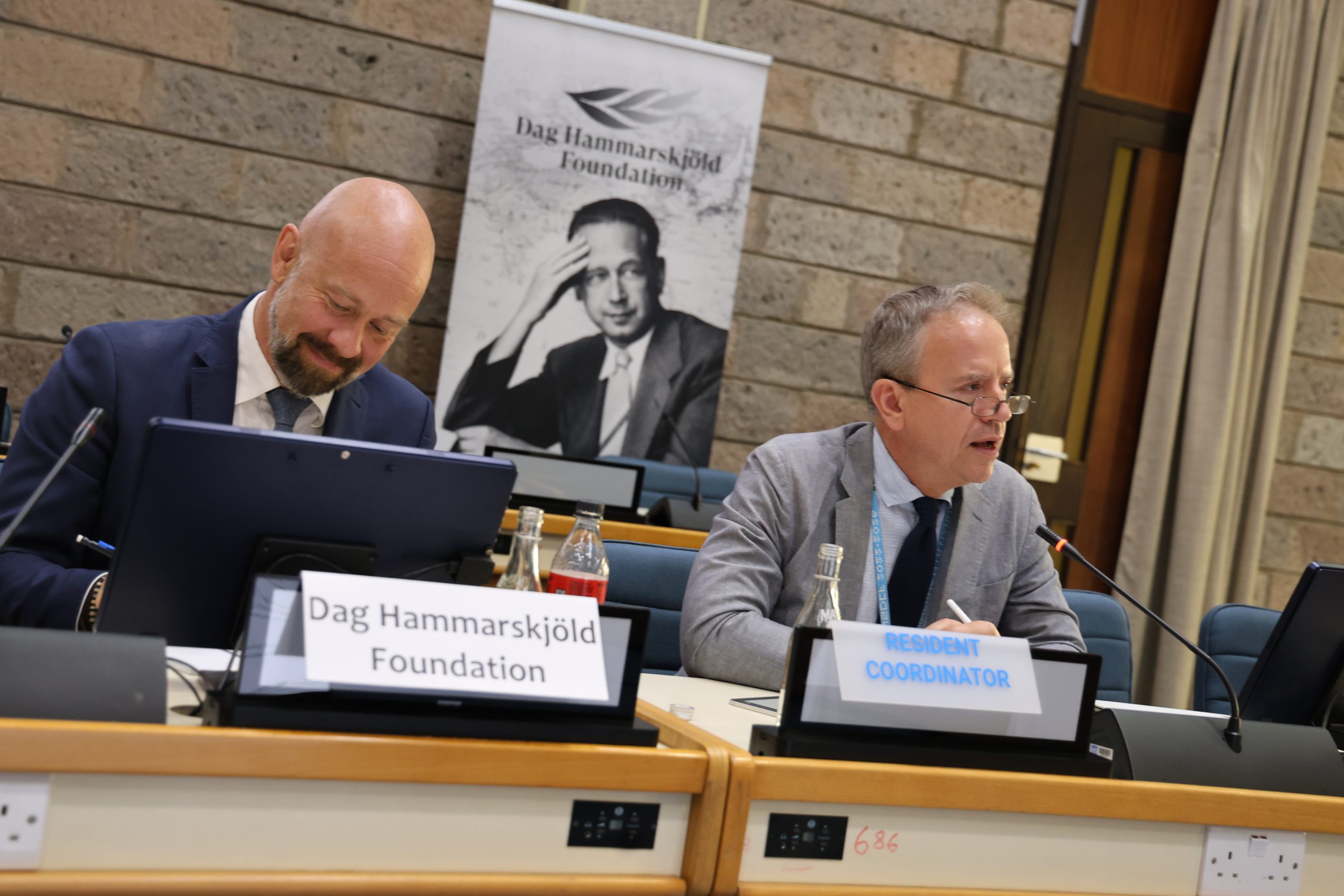
UN RC in Kenya Stephen Jackson (right) and Foundation’s Programme Director Peter Linner (left) welcome the participants to the third consultations on UN Funding Compact implementation in Kenya.
25 September, Nairobi, Kenya. Stephen Jackson, UN Resident Coordinator in Kenya and Piter Linner, Programme Director of Dag Hammarskjold Foundation welcomed representatives from 20 Member States and 8 UN entities to the third national dialogue on the UN Funding Compact. The conversation explored how the UN and its partners can secure higher-quality, less fragmented funding to address today’s development and humanitarian challenges.
Opening the meeting, Stephen Jackson underlined the significance of the Funding Compact in today’s global context. “In these extremely uncertain times for development financing, the implementation of the Funding Compact is critical for the UN’s ability to deliver,” he said. With the UN’s 80th anniversary and major reforms on the horizon, he stressed that coherence in funding is essential, warning that “fragmented funding risks fragmenting the UN.”
Global Data and Local Experiences
The dialogue began with a presentation of the latest global data on UN funding, alongside findings from country-level research on the Funding Compact, shared by the Piter Linner. Often referred to as the “guardian” of the Compact as Stephen Jackson mentioned, Dag Hammarskjold Foundation supports global implementation while also investing in local-level dialogues such as this one in Kenya—the third of its kind in the country.
Donor Perspectives on Quality Funding and Effective UN
In the ensuing discussion, UN member states representatives shared their commitments and concerns in light of shifting ODA landscapes. Henrik Larsen, Head of Cooperation at the Embassy of Denmark in Kenya, reaffirmed Denmark’s intention to remain within 0.7% of GNI for official development assistance in 2025. He also encouraged more softly earmarked funding and stronger inter-agency collaboration.
Siv Moe, Norway’s Ambassador to Kenya, highlighted the country’s continued prioritisation of core and soft earmarked funding but pointed to the importance of high-quality reporting and visibility to sustain donor confidence, noting existing participation of Norway in pooled funding mechanisms for Kenya and Somalia.
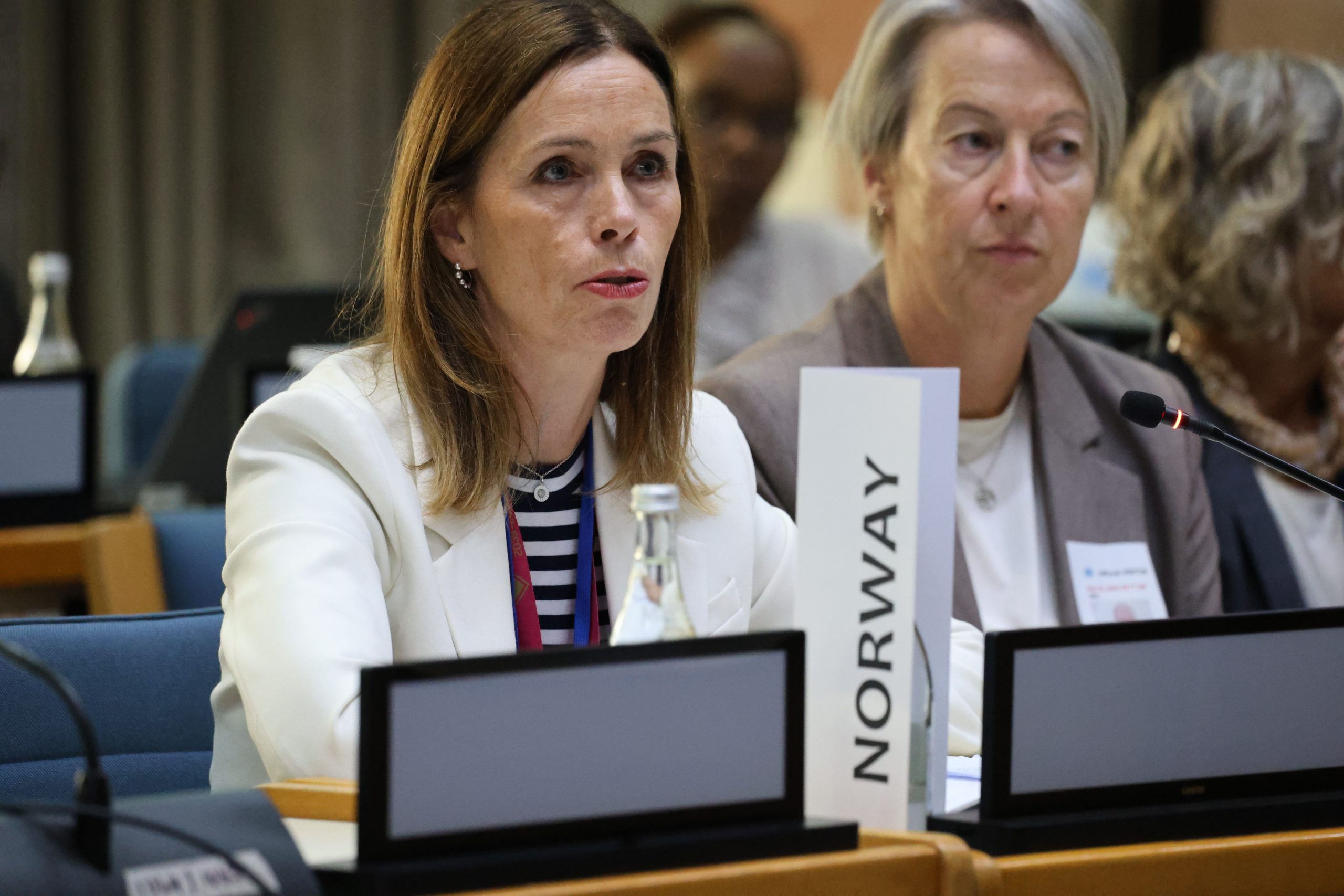
Siv Moe, Ambassador of Norway to Kenya (left) and Gunvor Skancke, Director General of NORAD speaking about the importance of high quality and visibility.
Caitríona Ingoldsby, Ambassador of Ireland to Kenya, emphasised the power of communication, suggesting creative tools such as short videos to demonstrate the impact of joint programmes. Sophie Price, Head of Cooperation at the Embassy of Canada to Kenya, underlined the advantages of pooled funding for simplifying donor processes, while noting that communicating results effectively is key to building trust. Carla Benini, Deputy Chief of Mission at the US Embassy to Kenya, described significant changes in US humanitarian and development cooperation, presenting the country’s new global health strategy with Kenya as a key partner.
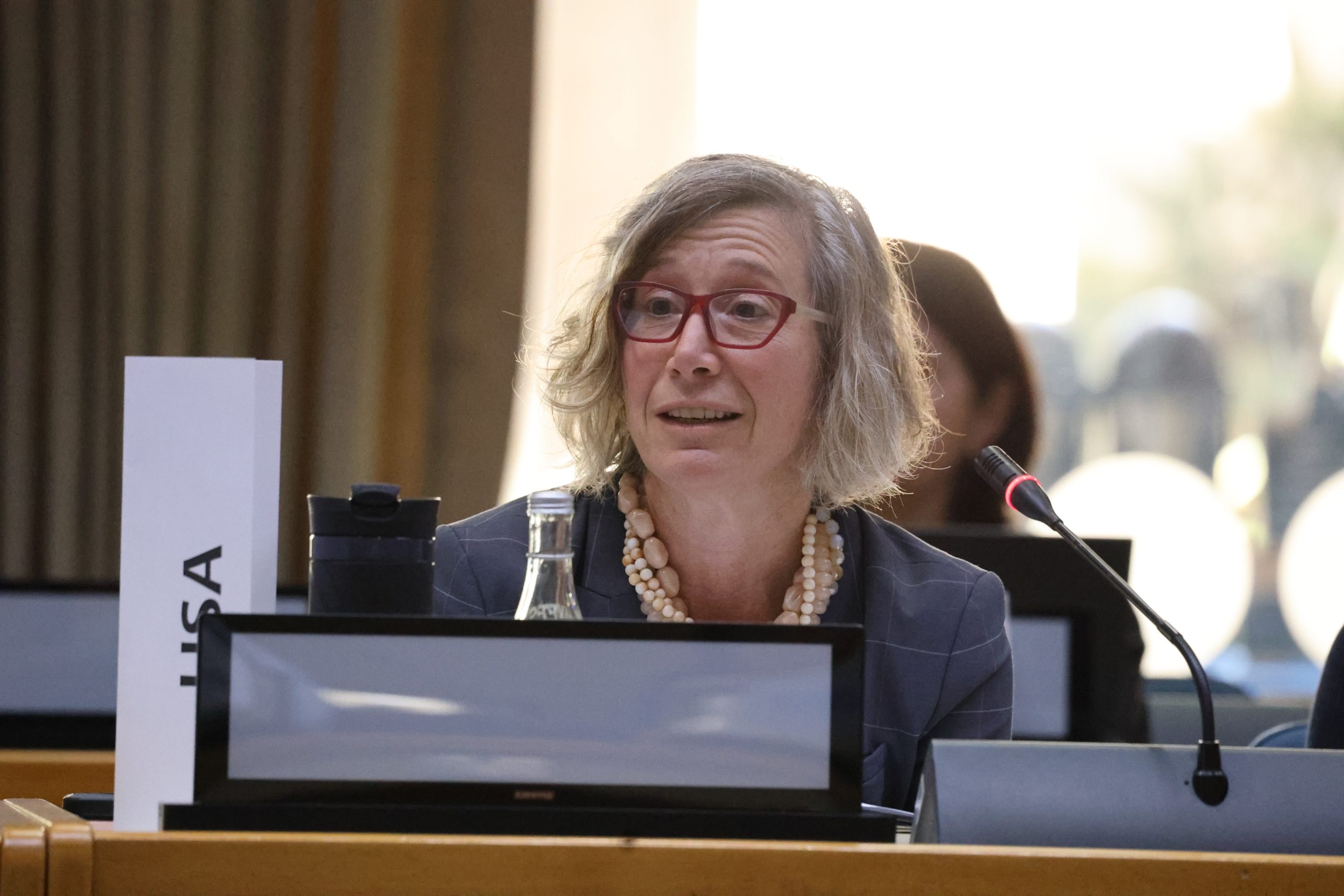
Carla Benini, Deputy Chief of Mission in the Embassy of the US to Kenya noting ongoing changes in US official development assistance.
The Resident Coordinator also highlighted the US role in helping the region overcome the devastating effects of drought recently. Christian Friedemann, Head of Development Cooperation at the Embassy of Germany in Kenya, voiced concern over cuts to Germany’s ODA budget in 2025, but stressed its continued commitment to quality funding and improved reporting.
Sophie Tanner, Head of Strategy, Assurance & Results Team at the British High Commission in Kenya, noted that while the UK’s ODA level is decreasing from 0.5 to 0.3% of GNI, it will prioritise core funding and called for clearer delineation of agency mandates.
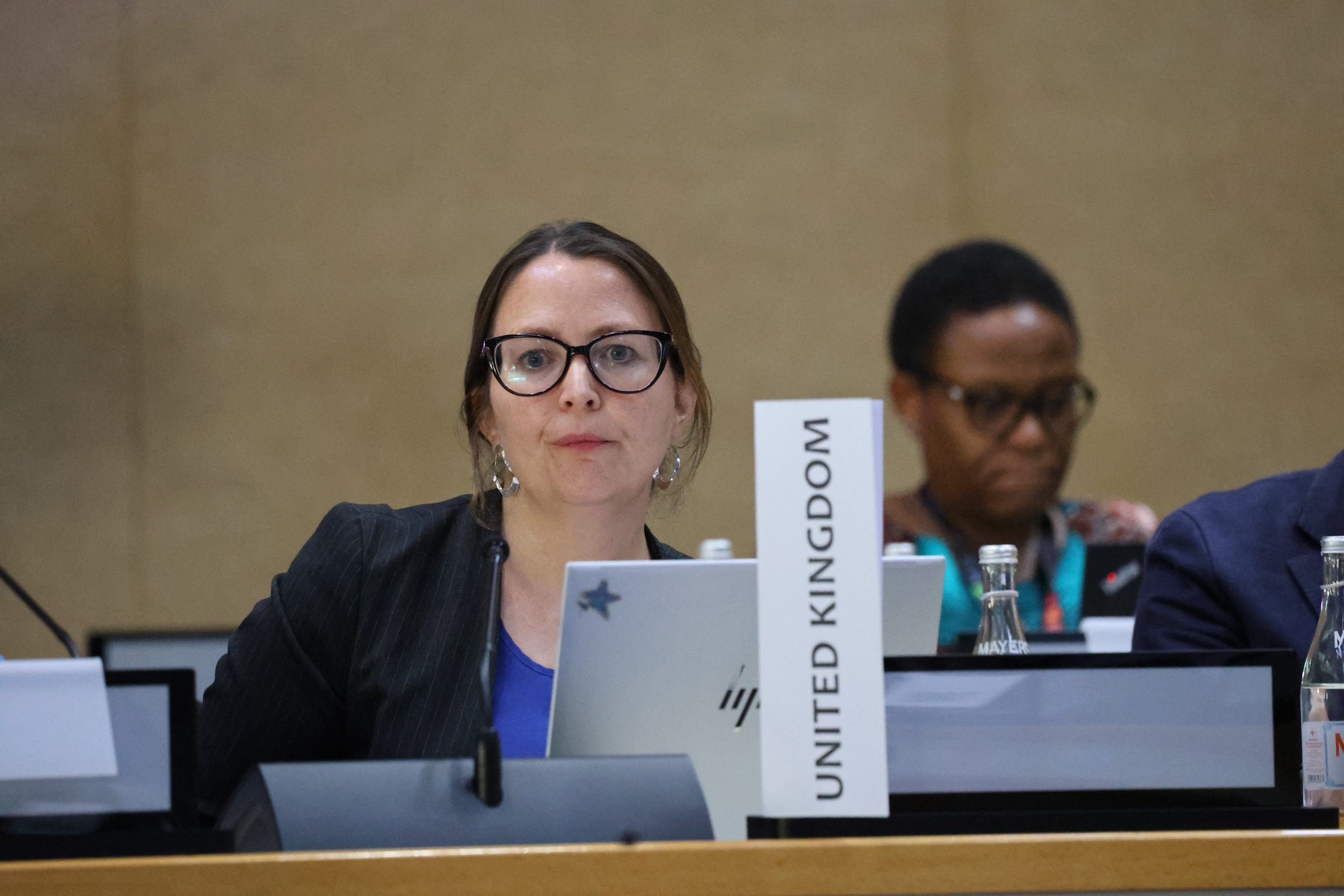
Sophie Tanner, Head of strategy and Assurance in the British High Commision to Kenya mentioning decrease of official development funding by the UK.
Ogihara Hiroshi, Deputy Chief of Mission of Japan to Kenya, underscored the importance of donor visibility and the value of success stories in shifting away from project-based funding.
The representative of the Italian Development Agency explained that earmarking remains central to Italy’s approach, driven by the need for control and accountability, while also emphasising the importance of effectiveness reporting.
UN Perspectives: Collaboration and Visibility
Representatives from UN agencies also weighed in. Anders Thomsen, UNFPA’s Representative in Kenya, stressed the need to show greater visibility “per dollar spent.” At the same time, he pointed to the challenges of pooled funding, where approval processes can slow implementation—raising the question of how to balance efficiency with the integrity of joint approaches.
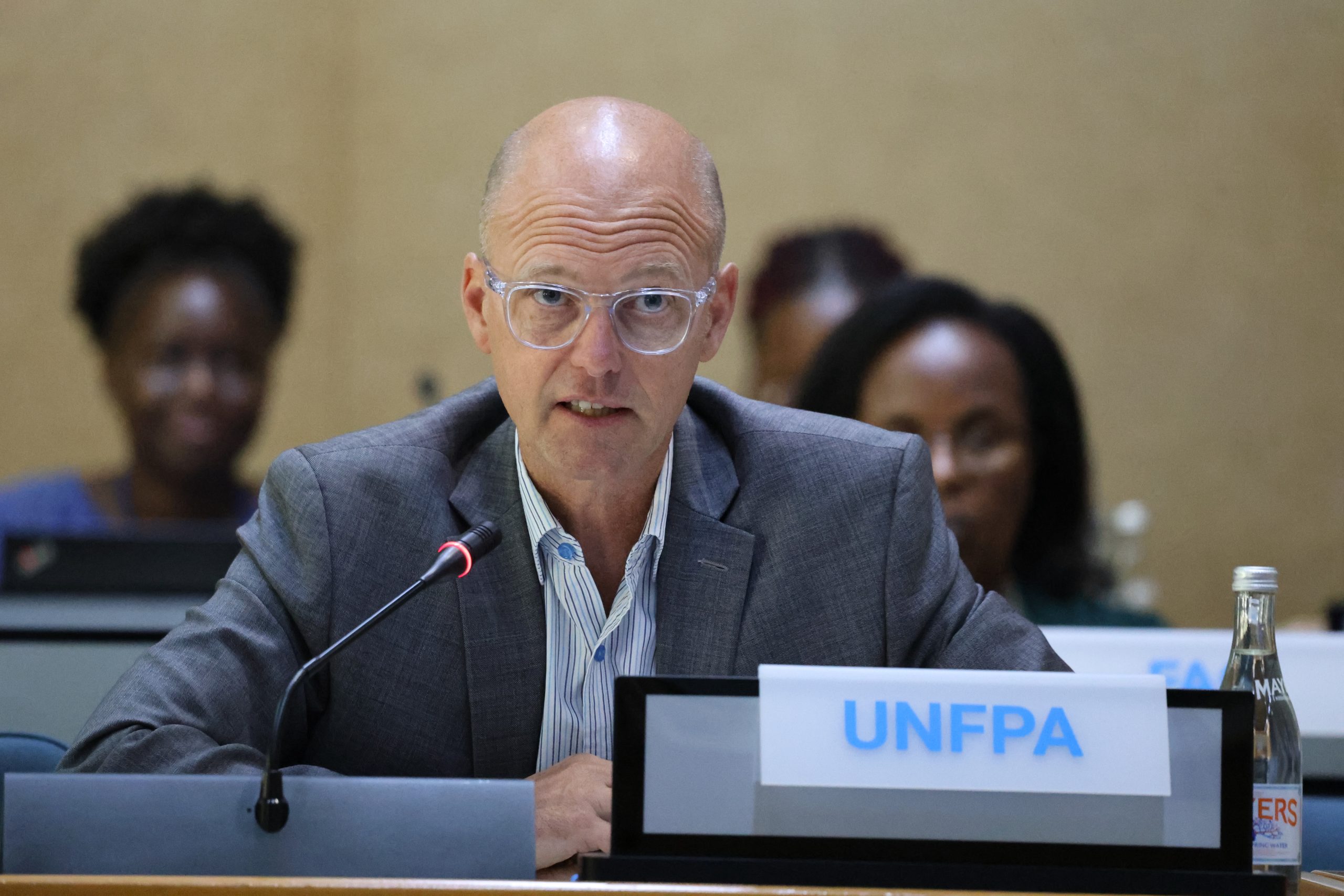
Anders Thomsen, UNFPA Representative in Kenya speaking about the challenge of keeping the balance between effectiveness and efficiency when implementing development programmes.
Stephen Jackson suggested developing joint communication products that could resonate with broader audiences and showcase the value of co-creation and collaboration. Such efforts, he argued, not only strengthen donor confidence but also promote inter-agency cooperation, which is essential for achieving the Sustainable Development Goals.
Looking Ahead to UN80
The dialogue concluded with a shared understanding: fragmented and unpredictable funding undermines the UN’s effectiveness, while high-quality funding—predictable, pooled, and visible—has the potential to amplify impact. As the UN approaches its 80th anniversary, participants agreed that strengthening the Funding Compact is more than a technical exercise; it is a crucial step in ensuring the credibility and effectiveness of multilateralism itself.
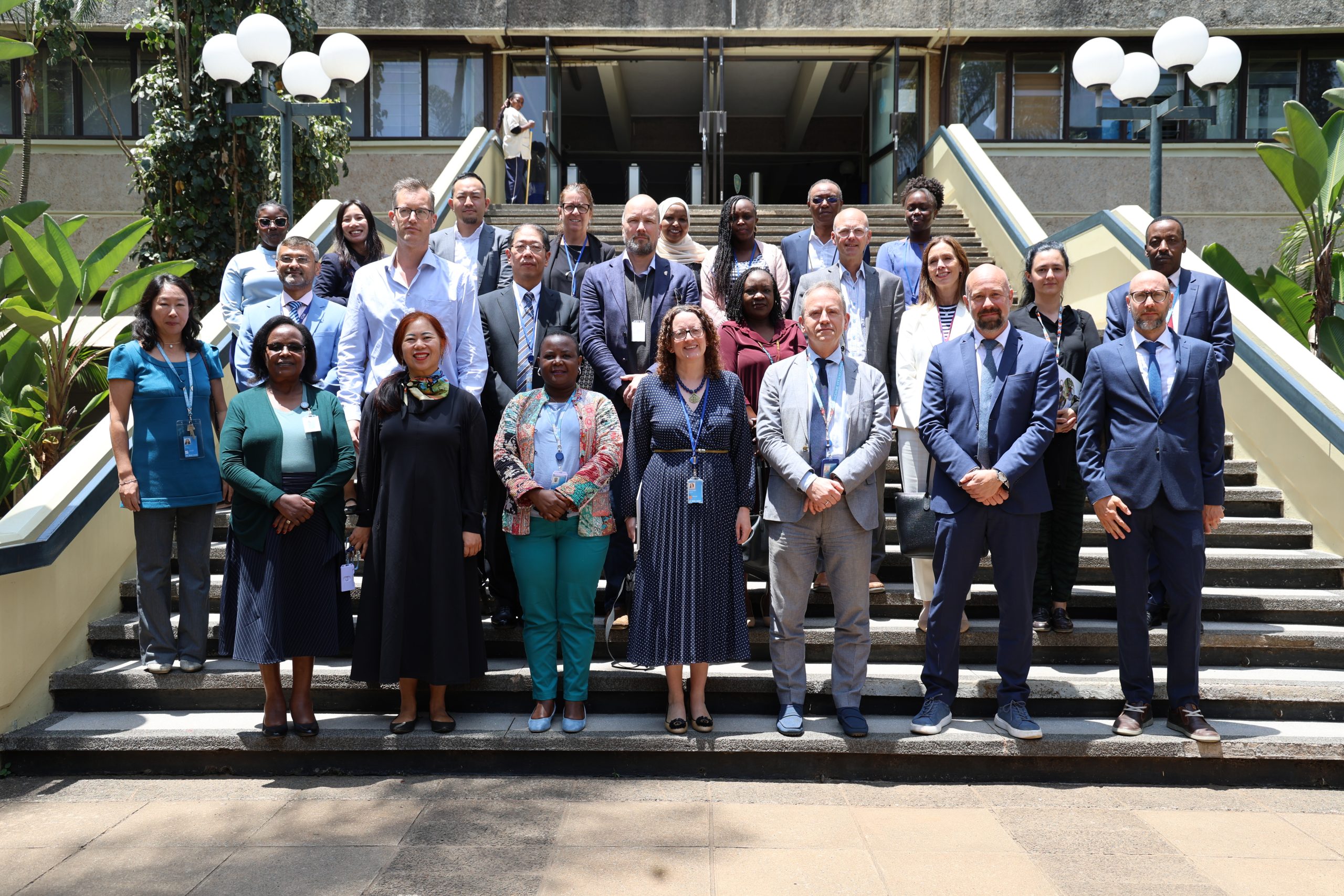
Participants of the third consultations on Funding Compact implementation in Kenya.
